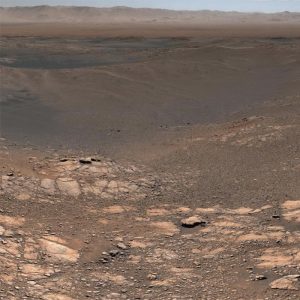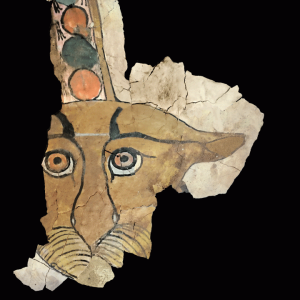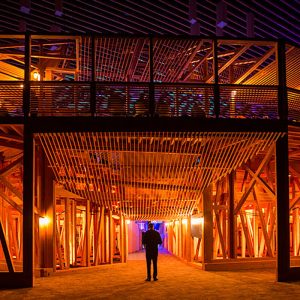Link About It: This Week’s Picks
Putting excess London Underground heat to use, an app for analog photography, a 2,000-year-old sarcophagus and more

NASA’s Highest-Resolution Photo of Mars
 NASA’s new image of the surface of Mars—the space agency’s highest-resolution photograph of the Red Planet ever—comprises 1,200 total images. The wide-pan photograph features what researchers hypothesize are former sites of lakes and streams that dried up over the course of several billion years. The 1.8-billion-pixel shot was taken by the Curiosity Rover during November and December of 2019 and surveyed in the months that followed, all before being released to the general public. NASA’s Jet Propulsion Laboratory’s website offers a window-sized version of the photograph. There, viewers have the ability to zoom in and out. Read more at Travel and Leisure.
NASA’s new image of the surface of Mars—the space agency’s highest-resolution photograph of the Red Planet ever—comprises 1,200 total images. The wide-pan photograph features what researchers hypothesize are former sites of lakes and streams that dried up over the course of several billion years. The 1.8-billion-pixel shot was taken by the Curiosity Rover during November and December of 2019 and surveyed in the months that followed, all before being released to the general public. NASA’s Jet Propulsion Laboratory’s website offers a window-sized version of the photograph. There, viewers have the ability to zoom in and out. Read more at Travel and Leisure.
Playtronica’s MIDI Turns Vegetables Into Instruments
 Berlin-based creative studio Playtronica unveils its newest innovation, a MIDI device that turns “organic materials and mostly anything that has water inside” into instruments. That means tapping onto the skins of fruits, vegetables and even body parts will produce different notes and samples can be swapped in for the standard sounds, too. The kit can be used with up to 16 objects (attached using included crocodile clips) or with just the TouchMe board and two people. The gadget works by creating a circuit between device, fruit (or vegetable) and the human body, and can connect with “hardware, software or browser-based synthesizers.” Read more at designboom.
Berlin-based creative studio Playtronica unveils its newest innovation, a MIDI device that turns “organic materials and mostly anything that has water inside” into instruments. That means tapping onto the skins of fruits, vegetables and even body parts will produce different notes and samples can be swapped in for the standard sounds, too. The kit can be used with up to 16 objects (attached using included crocodile clips) or with just the TouchMe board and two people. The gadget works by creating a circuit between device, fruit (or vegetable) and the human body, and can connect with “hardware, software or browser-based synthesizers.” Read more at designboom.
2,000-Year-Old Sarcophagus Adorned With Leopard Painting Found
 On the western bank of the Nile, 15 feet below ground, an archeological dig (led by Patrizia Piacentini from the University of Milan) has unearthed a stunning 2,000-year-old sarcophagus lid adorned with a colored painting of a leopard’s face. “Her name is Mafdet (meaning ‘she who runs’) and she was the first of the Egyptian cat goddesses, long before the more modish Bastet and Sekhmet,” Hakim Bishara writes for Hyperallergic. The leopard was often used as a symbol of protection, and this one was painted near to the mummy’s head—presumably to keep them safe in the afterlife. While the discovery was made last year, it’s only now that the team of Egyptologists has released a digital reconstruction of the image that they’re now working to restore. According to Piacentini, the piece “could go back to its original splendor.” Read more at Hyperallergic.
On the western bank of the Nile, 15 feet below ground, an archeological dig (led by Patrizia Piacentini from the University of Milan) has unearthed a stunning 2,000-year-old sarcophagus lid adorned with a colored painting of a leopard’s face. “Her name is Mafdet (meaning ‘she who runs’) and she was the first of the Egyptian cat goddesses, long before the more modish Bastet and Sekhmet,” Hakim Bishara writes for Hyperallergic. The leopard was often used as a symbol of protection, and this one was painted near to the mummy’s head—presumably to keep them safe in the afterlife. While the discovery was made last year, it’s only now that the team of Egyptologists has released a digital reconstruction of the image that they’re now working to restore. According to Piacentini, the piece “could go back to its original splendor.” Read more at Hyperallergic.
Excess Heat From the London Underground Used to Warm Nearby Homes
 A red, metal-clad building—the Bunhill 2 Energy Centre—in London’s Islington marks the center of Europe’s newest type of energy network. The building itself (by Cullinan Studio) acts as the central provider for heat and hot water for hundreds of homes and public offices within its proximity. A fan situated below ground, but above the Underground redirects heat from the Northern Line tunnel (which would otherwise escape or dissipate) and uses it to heat water that’s then funneled to consumers. Not only does this system drastically reduce carbon emissions, but it’s also an energy source founded upon resourcefulness and pragmatism. Read more at Dezeen.
A red, metal-clad building—the Bunhill 2 Energy Centre—in London’s Islington marks the center of Europe’s newest type of energy network. The building itself (by Cullinan Studio) acts as the central provider for heat and hot water for hundreds of homes and public offices within its proximity. A fan situated below ground, but above the Underground redirects heat from the Northern Line tunnel (which would otherwise escape or dissipate) and uses it to heat water that’s then funneled to consumers. Not only does this system drastically reduce carbon emissions, but it’s also an energy source founded upon resourcefulness and pragmatism. Read more at Dezeen.
Luce App Tracks the Fine Details of Film Photography
 Digital images today are captured with an EXIF meta data layer that stores pertinent facts about the shot so that photographers can study, report and refine their technique. Analog photography (somewhat by definition) remains largely under-serviced by this kind of high-tech service. Luce, an upstart iOS app—from developers Don Chia and his partner, Diego—offers a centralized space for analog photographers to log image data while they’re shooting film. Shutter speed, film type, ISO, camera model, aperture, location, timestamp and more can be quickly and easily recorded after a photo is taken and later paired in EXIF format with the digitized file. Rather than rely on a notebook or some sort of text-editing app, users could turn to Luce for a more streamlined process—once the app hits the iOS market. Read more about the forthcoming launch at The Phoblographer.
Digital images today are captured with an EXIF meta data layer that stores pertinent facts about the shot so that photographers can study, report and refine their technique. Analog photography (somewhat by definition) remains largely under-serviced by this kind of high-tech service. Luce, an upstart iOS app—from developers Don Chia and his partner, Diego—offers a centralized space for analog photographers to log image data while they’re shooting film. Shutter speed, film type, ISO, camera model, aperture, location, timestamp and more can be quickly and easily recorded after a photo is taken and later paired in EXIF format with the digitized file. Rather than rely on a notebook or some sort of text-editing app, users could turn to Luce for a more streamlined process—once the app hits the iOS market. Read more about the forthcoming launch at The Phoblographer.
TED2020 Postponed Until July
 Amidst concern over the spread of COVID-19, numerous festivals, conferences and more have been postponed, moved to streaming models of attendance, or canceled entirely. Initially scheduled for 20-24 April, TED2020 is one of those events. Rather than simply make the decision in-house, however, TED polled registered attendees to find whether or not they wished to keep the scheduled April dates and view a livestream of talks or postpone the event until 26-30 July and meet in Vancouver where the annual conference is traditionally held. A consensus voted in favor of the latter option, confirming that the power of an in-person experience remains remarkably valuable. Read more at their blog.
Amidst concern over the spread of COVID-19, numerous festivals, conferences and more have been postponed, moved to streaming models of attendance, or canceled entirely. Initially scheduled for 20-24 April, TED2020 is one of those events. Rather than simply make the decision in-house, however, TED polled registered attendees to find whether or not they wished to keep the scheduled April dates and view a livestream of talks or postpone the event until 26-30 July and meet in Vancouver where the annual conference is traditionally held. A consensus voted in favor of the latter option, confirming that the power of an in-person experience remains remarkably valuable. Read more at their blog.
Link About It is our filtered look at the web, shared daily in Link and on social media, and rounded up every Saturday morning.











